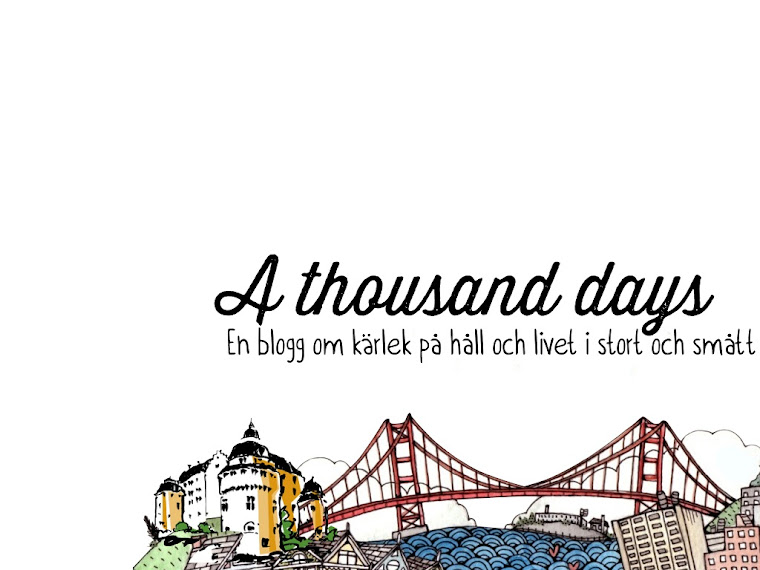 |
| Photo: thesatoralist.com |
Flying back to San Francisco from Stockholm for my second semester at college I finished reading one of the greatest novels I’ve ever read. I had picked it up at the legendary bookstore Shakespeare and Company in Paris a few weeks earlier, and from the very first page I was hooked:
No man is an island,
Entire of itself.
Each is a piece of the continent,
A part of the main.
If a clod be washed away by the sea,
Europe is the less.
As well as if a promontory were.
As well as if a manner of thine own
Or of thine friend’s were.
Each man’s death diminishes me,
For I am involved in mankind.
Therefore, send not to know
For whom the bell tolls,
It tolls for thee.
This is the poem by John Donne that preludes Ernest Hemingway’s classic novel “For Whom The Bell Tool” published in 1940, and what follows is an absolutely gorgeous depiction of the horrors of war and the immortality of true love.
A few years ago I never read fiction, simply because I found reality way to interesting and complicated to bother myself with anything that wasn't real or at least sprung out of some sort of truth. Since then I have changed my mind and discovered the enormous value and beauty in a piece of well-written fiction, but I believe that it was a combination of the old and new me that made me appreciate “For Whom...” as much as I did.
The story of the American dynamiter Robert Jordan finding love in the mountains of Segovia while working with a group of republican guerrilla soldiers is obviously fictional, while the story of the Spanish civil-war is absolutely real. That combination touched me deeply.
Not only does the element of reality add emotion to the fate of the loving couple, but also gives life to a war that I had earlier only experienced through dates, numbers and names in history books.
Couldn’t one say that that is the measurement of truly great art? Art that inspires thought and emotion with the receiver, in a place where it had not existed before?
Reading this fantastic novel I was reminded of another piece of art inspired by the same conflict, that had made me understand the gruesomeness of war many years earlier.
It was Picasso’s painting “Guernica”, and I remember the high-school me being petrified by the deformed bodies, the haunted faces, and the hopelessness embedded within the varying shades of grey in the painting.
More than any abstract photo of a mushroom cloud or the desolate landscape of a destroyed Hiroshima, “Guernica” made me understand what really happened within those burning fireball infernos dropped upon cities, villages, and human beings.
At around the same time that I experienced “Guernica” for the first time, I asked my parents to buy The Clash’s album “London Calling” for me during a trip they made to London.
My dad being a fan was exited and gladly brought it home for me and I remember sitting in my room as the nineteen tracks played through and felt almost instantly that life was going to feel a bit different from now on.
Song number six on that iconic album is called “Spanish Bombs” and contains everything a proper Clash song should: Upbeat rhythm, simple melody, and Joe Strummer singing with almost satirical tone how pina-colada sipping tourist now populate the hills and beaches where brave men and women died for a cause more important than their own lives during the war. Strummer singing of “trenches full of poets” and “weeks in my disco casino” made me question how I lived my life. Which cause was I prepared to die for?
A few weeks ago the The One Club’s Young Ones Competition of 2014 was launched and the brief asked the competitors to advertise the importance of art, and to me the question of why art matters is answered in this very blogpost.
There are four artists mentioned in this text that all made me look upon a significant event in history from four entirely different points of view. After experiencing the art of Hemingway, Dunne, Picasso, and Strummer, my understanding of the Spanish civil-war expands beyond numbers and facts, but actually touches me as if it were my brothers or sisters that died in those trenches.
In my opinion that’s why art matters, because regardless of it being a piece of literature, music, or a painting, the stories that are told could not have been told any other way, and the inspiration I found in them would never have been discovered elsewhere.
"Guernica" - http://en.wikipedia.org/wiki/Guernica_(painting)
"Spanish Bombs" - http://www.youtube.com/watch?v=u-qcy0-7ngw

Marcus. Thank you. Sincerely. Thoughtful, intelligent and an authentic look at the forms of storytelling. It does not surprise me that you already blog. Keep it up.
SvaraRadera